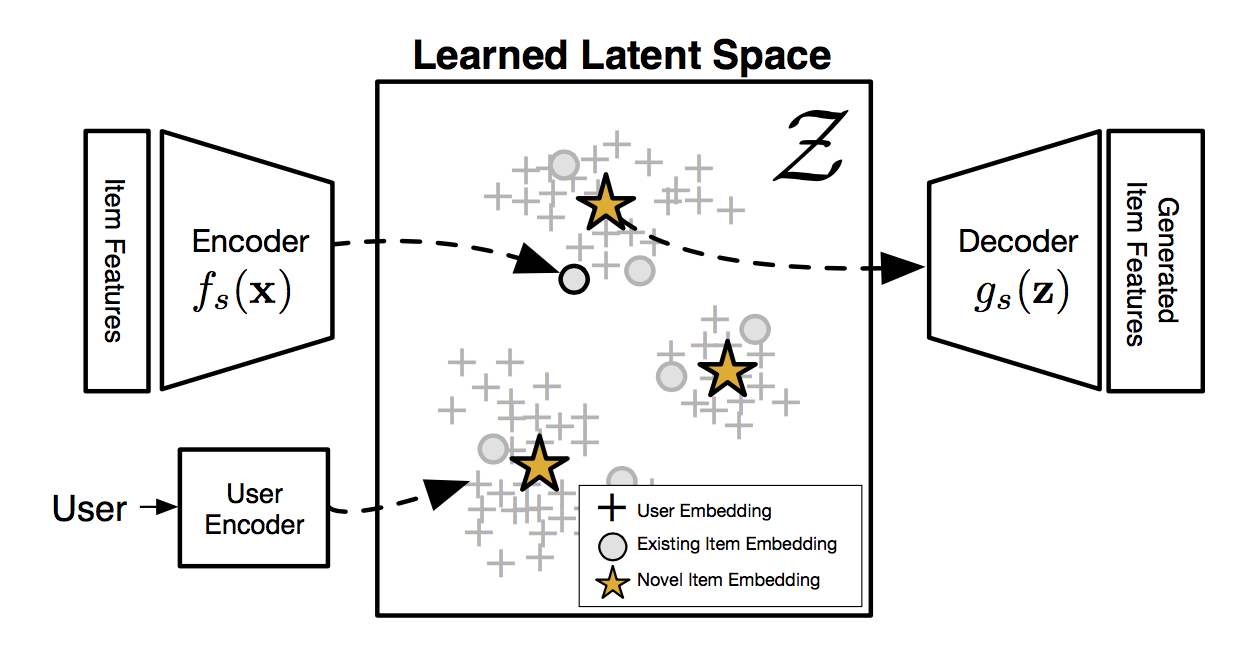theme: recommendation
Generation meets recommendation
2018

Figure 1: An Overview of Generating New (Non-Existent) Items for Groups of Users. Our approach relies on two re- lated components: (i) a shared latent representation space learnt from user-item rating data and (ii) a pair of func- tions: the encoder fs (x) that maps item features x to their re- spective latent representations/embeddings z, and a decoder gs (z) that performs the inverse operation, i.e., maps embed- dings z to item features x. We exploit this space to obtain novel items with high predicted desirability through greedy weighted maximum coverage, and then generate item fea- tures via the decoder.
(Vo & Soh, 2018)Consider a movie studio aiming to produce a set of new movies for summer release: What types of movies it should produce? Who would the movies appeal to? How many movies should it make? Similar issues are encountered by a variety of organizations, e.g., mobile-phone manufacturers and online magazines, who have to create new (non-existent) items to satisfy groups of users with di erent preferences. In this paper, we present a joint problem formalization of these interrelated issues, and propose generative methods that address these questions simultaneously.
(Vo & Soh, 2018)Vo, T. V., & Soh, H. (2018). Generation meets recommendation: proposing novel items for groups of users. In Proceedings of the 12th ACM Conference on Recommender Systems - RecSys ’18 (pp. 145–153). Vancouver, British Columbia, Canada: ACM Press. [link]
theme: recommendation